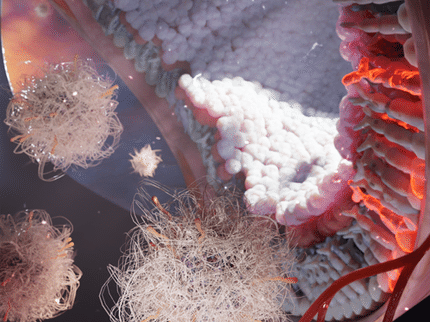UF researchers develop gene therapy that could correct a common form of blindness
A new gene therapy method developed by University of Florida researchers has the potential to treat a common form of blindness that strikes both youngsters and adults. The technique works by replacing a malfunctioning gene in the eye with a normal working copy that supplies a protein necessary for light-sensitive cells in the eye to function. The findings are published in the Proceedings of the National Academy of Sciences online. Several complex and costly steps remain before the gene therapy technique can be used in humans, but once at that stage, it has great potential to change lives.
“Imagine that you can’t see or can just barely see, and that could be changed to function at some levels so that you could read, navigate, maybe even drive — it would change your life considerably,” said study co-author William W. Hauswirth, Ph.D., the Rybaczki-Bullard professor of ophthalmology in the UF College of Medicine and a professor and eminent scholar in department of molecular genetics and microbiology and the UF Genetics Institute. “Providing the gene that’s missing is one of the ultimate ways of treating disease and restoring significant visual function.”
The researchers tackled a condition called X-linked retinitis pigmentosa, a genetic defect that is passed from mothers to sons. Girls carry the trait, but do not have the kind of vision loss seen among boys. About 100,000 people in the U.S. have a form of retinitis pigmentosa, which is characterized by initial loss of peripheral vision and night vision, which eventually progresses to tunnel vision, then blindness. In some cases, loss of sight coincides with the appearance of dark-colored areas on the usually orange-colored retina.
“That was a great advance, which showed that gene therapy is safe and lasts for years in humans, but this new study has the potential for a bigger impact, because it is treating a form of the disease that affects many more people,” said John G. Flannery, Ph.D., a professor of neurobiology at the University of California, Berkeley who is an expert in the design of viruses for delivering replacement genes. Flannery was not involved in the current study.
The X-linked form of retinitis pigmentosa addressed in the new study is the most common, and is caused by degeneration of light-sensitive cells in the eyes known as photoreceptor cells. It starts early in life, so though affected children are often born seeing, they gradually lose their vision.
“These children often go blind in the second decade of life, which is a very crucial period,” said co-author Alfred S. Lewin, Ph.D., a professor in the UF College of Medicine department of molecular genetics and microbiology and a member of the UF Genetics Institute. “This is a compelling reason to try to develop a therapy, because this disease hinders people’s ability to fully experience their world.”
Other news from the department science
Most read news
More news from our other portals
See the theme worlds for related content
Topic world Gene therapy
Genetic diseases once considered untreatable are now at the center of innovative therapeutic approaches. Research and development of gene therapies in biotech and pharma aim to directly correct or replace defective or missing genes to combat disease at the molecular level. This revolutionary approach promises not only to treat symptoms, but to eliminate the cause of the disease itself.

Topic world Gene therapy
Genetic diseases once considered untreatable are now at the center of innovative therapeutic approaches. Research and development of gene therapies in biotech and pharma aim to directly correct or replace defective or missing genes to combat disease at the molecular level. This revolutionary approach promises not only to treat symptoms, but to eliminate the cause of the disease itself.


























































